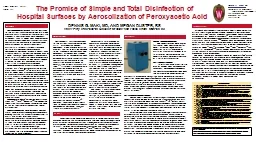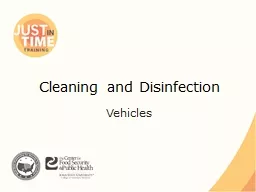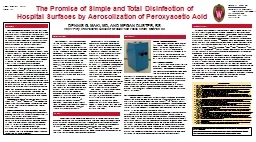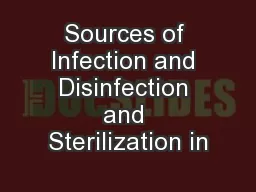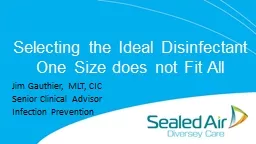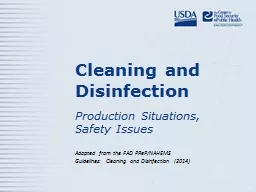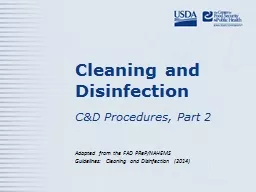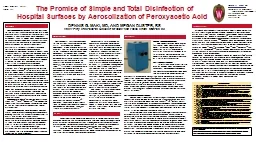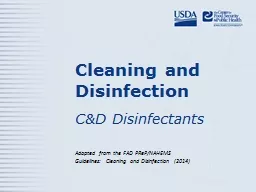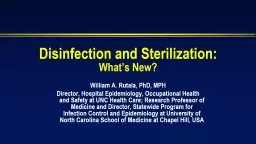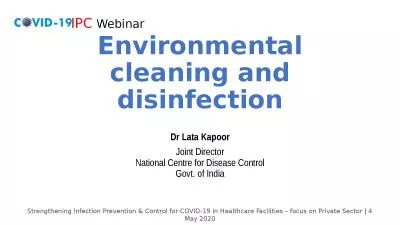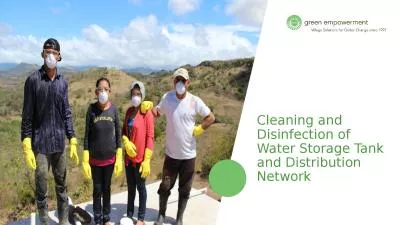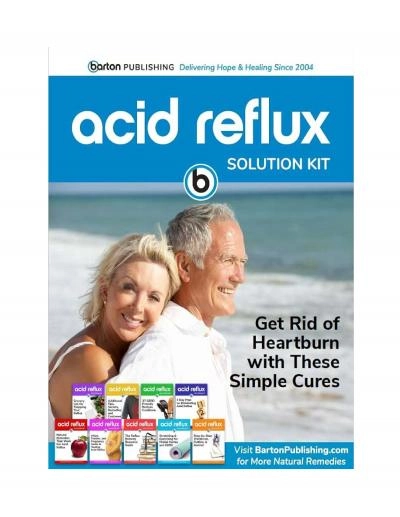PPT-The Promise of Simple and Total Disinfection of Hospital Surfaces by Aerosolization of
Author : tatiana-dople | Published Date : 2019-11-03
The Promise of Simple and Total Disinfection of Hospital Surfaces by Aerosolization of Peroxyacetic Acid DENNIS G MAKI MD AND MEGAN DUSTER BS University of Wisconsin
Presentation Embed Code
Download Presentation
Download Presentation The PPT/PDF document "The Promise of Simple and Total Disinfec..." is the property of its rightful owner. Permission is granted to download and print the materials on this website for personal, non-commercial use only, and to display it on your personal computer provided you do not modify the materials and that you retain all copyright notices contained in the materials. By downloading content from our website, you accept the terms of this agreement.
The Promise of Simple and Total Disinfection of Hospital Surfaces by Aerosolization of: Transcript
Download Rules Of Document
"The Promise of Simple and Total Disinfection of Hospital Surfaces by Aerosolization of"The content belongs to its owner. You may download and print it for personal use, without modification, and keep all copyright notices. By downloading, you agree to these terms.
Related Documents

